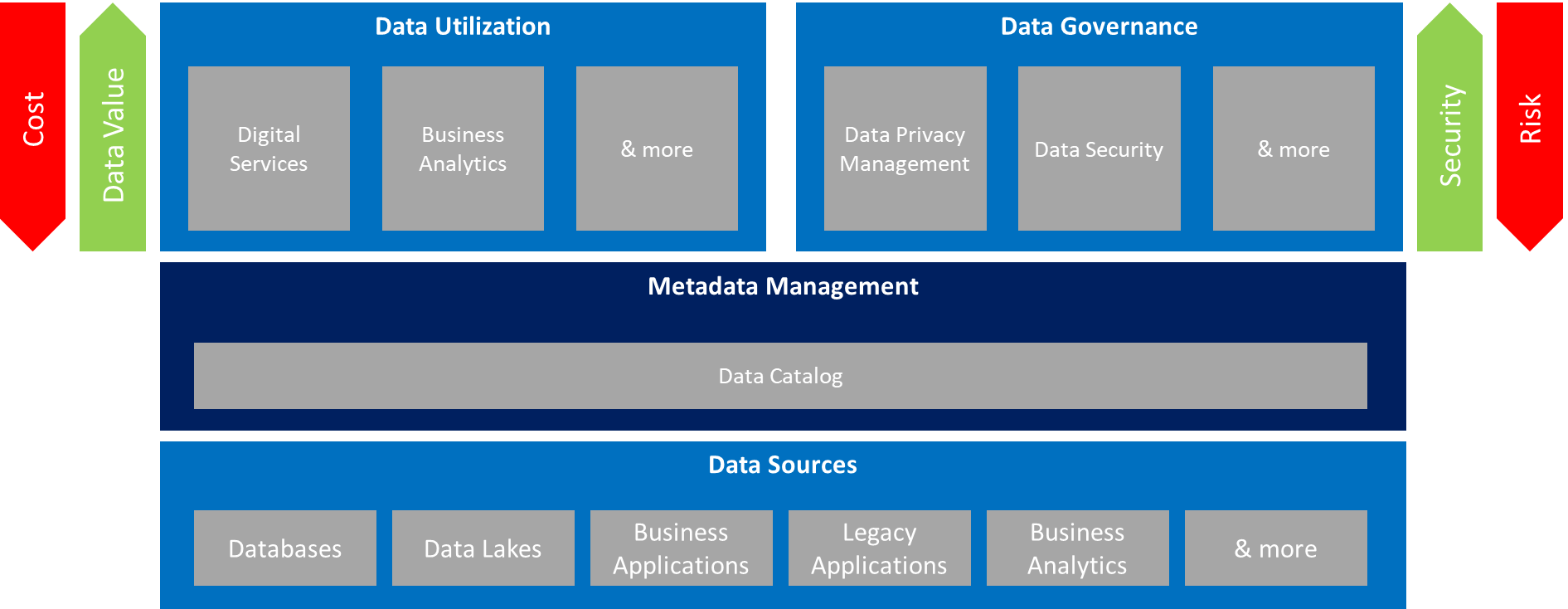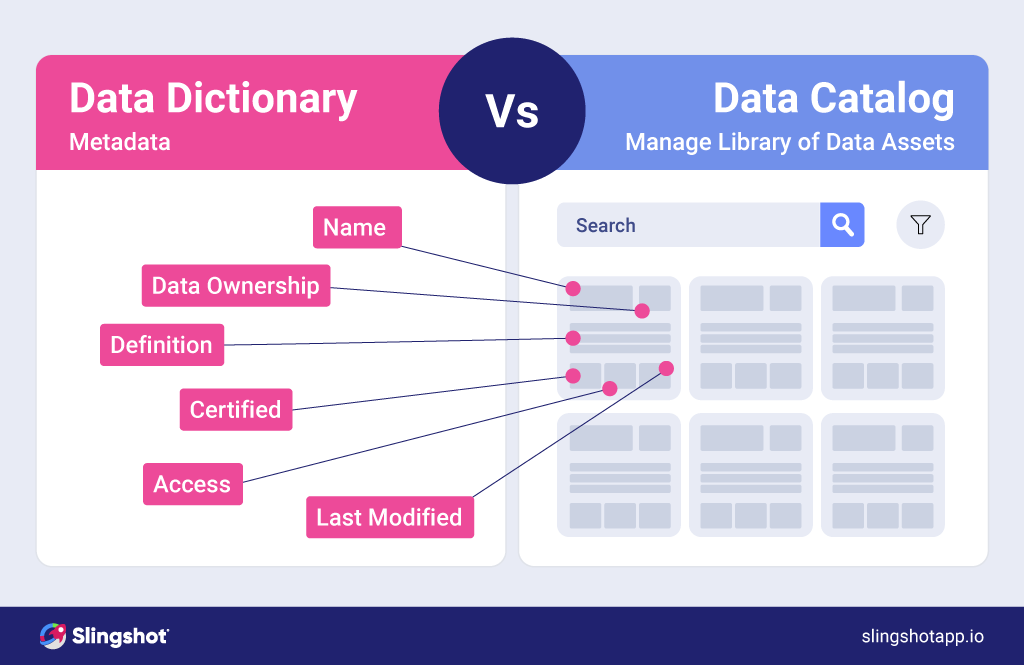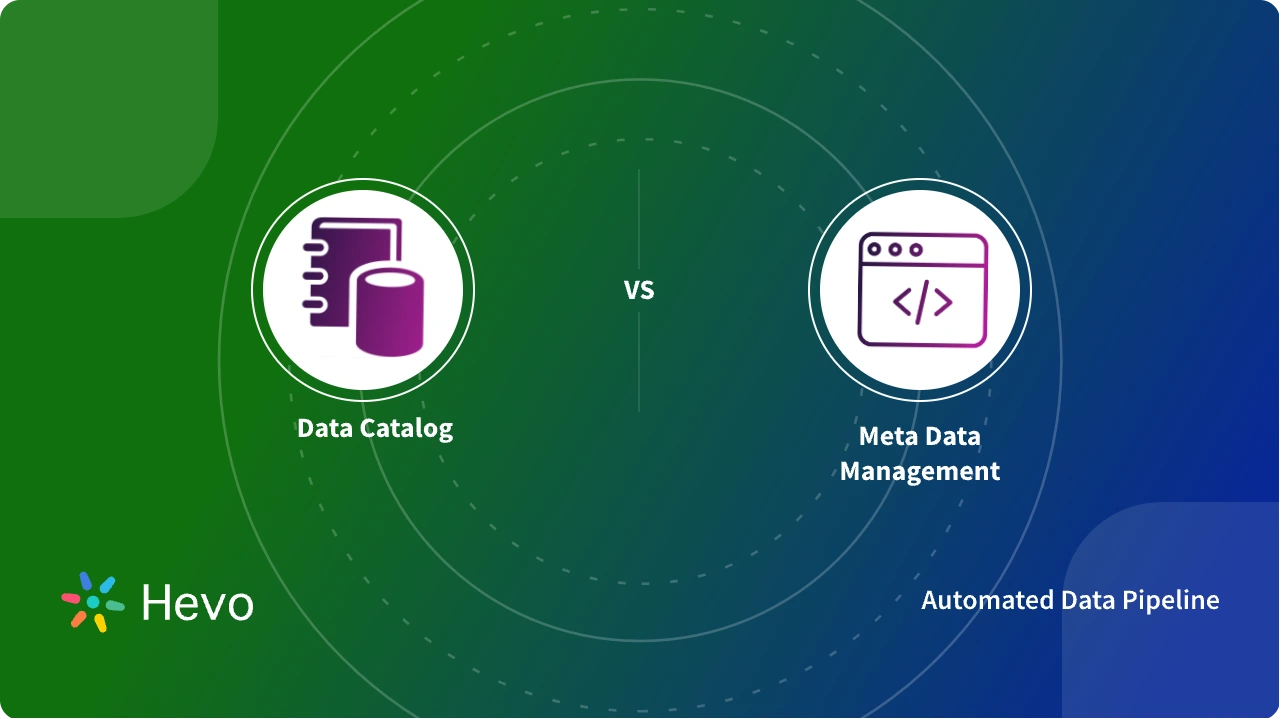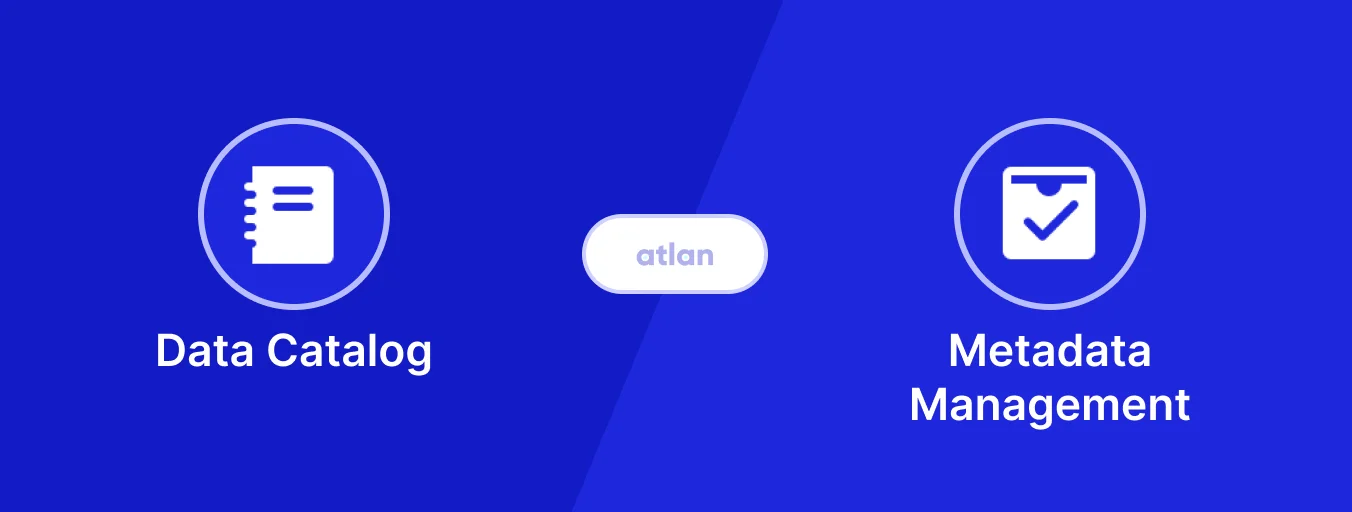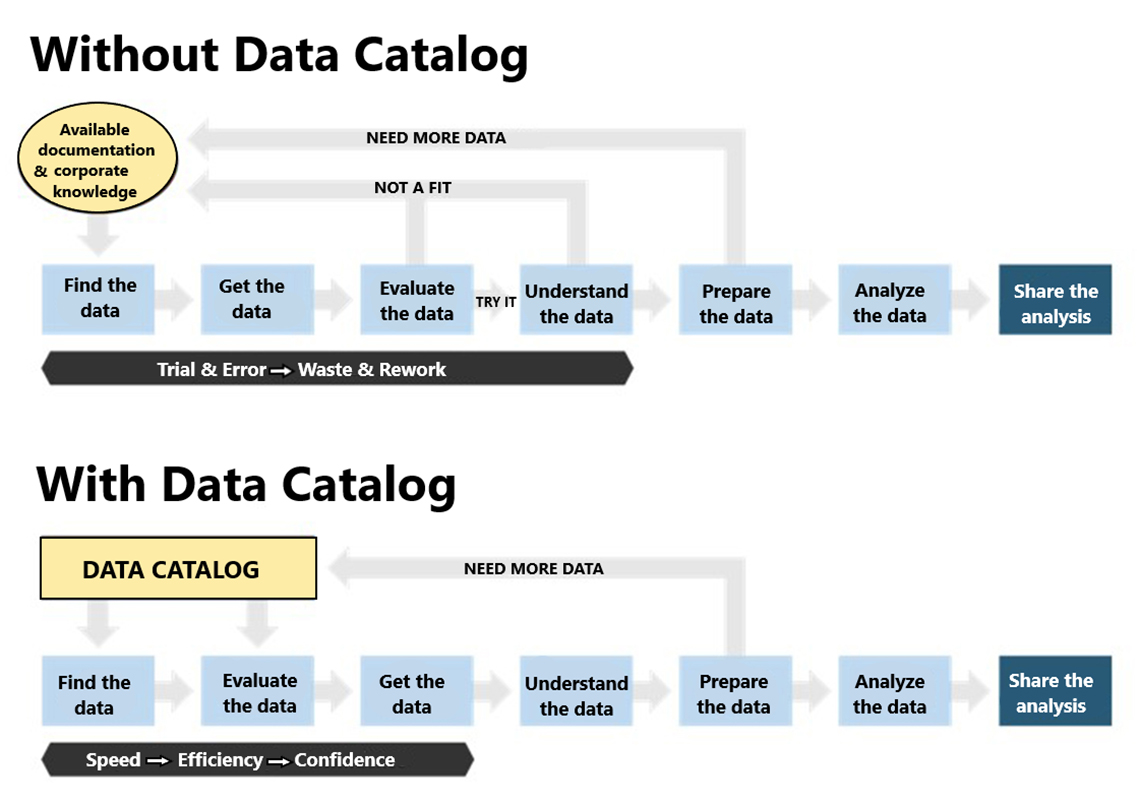Data Catalog Vs Metadata Management
Data Catalog Vs Metadata Management - The main difference between metadata management and a data catalog is that metadata management is a strategy or approach to handling your data. In this article, we’ll explain how data catalogs work, the crucial importance of metadata and effective metadata management, and how you can build a robust data catalog and accompanying metadata management practices in your organization. Both data catalogs and metadata management play critical roles in an organization's data management strategy. Learn the role each plays in data discovery, governance, and overall data strategy. This central catalog is complemented by metadata apis, which facilitate integration with other catalog systems. A data catalog is a tool that supports metadata management by organizing and storing metadata to help users find and access data. Although metadata, data dictionary, and catalog are interrelated, they serve distinct purposes: Metadata types encompass technical, business, and operational metadata, e ach contributing to a. Data catalogs and metadata catalogs share some similarities, particularly in their nearly identical names. Metadata, often described as 'data about data,' encompasses the descriptive details that provide context for data, such as file size, creation date, and format. Understanding the distinction between metadata and data catalogs is crucial for effective data management. Although metadata, data dictionary, and catalog are interrelated, they serve distinct purposes: Metastores and data catalogs are the. A data catalog is a tool that supports metadata management by organizing and storing metadata to help users find and access data. Automation will help reduce the complexities among seemingly disparate data sources in heterogeneous environments. Why is data cataloging important?. These differences show up in their scope, focus, who uses them, and how they are used in a company. The descriptive information about the data stored in the database, such as table names, column types, and constraints. While a data catalog facilitates data discovery and access, metadata management is responsible for capturing, storing, and managing the metadata associated with each dataset. The future of data management looks smarter, automated,. In essence, while metadata management is the blueprint for a library, a data catalog is the actual library catalog. Go for a data catalog if you need data discovery and profiling, vs metadata management if you require governance and policy enforcement. The descriptive information about the data stored in the database, such as table names, column types, and constraints. For. This central catalog is complemented by metadata apis, which facilitate integration with other catalog systems. Learn the role each plays in data discovery, governance, and overall data strategy. Explore the differences between data catalogs and metadata management. Although metadata, data dictionary, and catalog are interrelated, they serve distinct purposes: While a data catalog facilitates data discovery and access, metadata management. The future of data management looks smarter, automated,. Explore the differences between data catalogs and metadata management. Metastores and data catalogs are the. The main difference between metadata management and a data catalog is that metadata management is a strategy or approach to handling your data. In contrast, data fabric includes automated governance features like data lineage, access controls, and. Although metadata, data dictionary, and catalog are interrelated, they serve distinct purposes: Explore the differences between data catalogs and metadata management. It is a critical component of any data governance strategy, providing users with easy access to a centralized repository of information about their organization’s valuable data assets. Metastores and data catalogs are the. The main difference between metadata management. Enter data cataloging and metadata management—two pivotal processes that, while distinct, work in tandem to enhance data utilization and governance. Go for a data catalog if you need data discovery and profiling, vs metadata management if you require governance and policy enforcement. Data profiles within the catalog offer valuable insights into the data’s characteristics, such as data type, format, and. In this article, we’ll explain how data catalogs work, the crucial importance of metadata and effective metadata management, and how you can build a robust data catalog and accompanying metadata management practices in your organization. Understanding the distinction between metadata and data catalogs is crucial for effective data management. What is a data catalog? While data catalogs focus on data. Go for a data catalog if you need data discovery and profiling, vs metadata management if you require governance and policy enforcement. A data catalog is a tool that supports metadata management by organizing and storing metadata to help users find and access data. Automation will help reduce the complexities among seemingly disparate data sources in heterogeneous environments. Data cataloging. Understanding the distinction between metadata and data catalogs is crucial for effective data management. And while they have some common functions, there are also important differences between the two entities that big data practitioners should know about. Efficiently locate relevant data for analysis, streamlining the process and freeing up valuable time for data scientists and analysts. While a data catalog. Data catalogs and metadata catalogs share some similarities, particularly in their nearly identical names. In contrast, data fabric includes automated governance features like data lineage, access controls, and metadata management. Although metadata, data dictionary, and catalog are interrelated, they serve distinct purposes: Although metadata, data dictionary, and catalog are interrelated, they serve distinct purposes: The future of data management looks. Metadata management focuses on the governance and organization of metadata, ensuring that it is accurate and accessible. Enter data cataloging and metadata management—two pivotal processes that, while distinct, work in tandem to enhance data utilization and governance. And while they have some common functions, there are also important differences between the two entities that big data practitioners should know about.. Metadata management is a strategy for handling data that involves creating, maintaining, and governing metadata. Metadata, often described as 'data about data,' encompasses the descriptive details that provide context for data, such as file size, creation date, and format. Enter data cataloging and metadata management—two pivotal processes that, while distinct, work in tandem to enhance data utilization and governance. A data catalog is an organized collection of metadata that describes the content and structure of data sources. The catalog is a crucial component for managing and discovering data. Automation will help reduce the complexities among seemingly disparate data sources in heterogeneous environments. In contrast, a data catalog is a tool — a means to support metadata management. In essence, while metadata management is the blueprint for a library, a data catalog is the actual library catalog. Both data catalogs and metadata management play critical roles in an organization's data management strategy. Metadata management focuses on the governance and organization of metadata, ensuring that it is accurate and accessible. Efficiently locate relevant data for analysis, streamlining the process and freeing up valuable time for data scientists and analysts. Explore the differences between data catalogs and metadata management. While a data catalog facilitates data discovery and access, metadata management is responsible for capturing, storing, and managing the metadata associated with each dataset. In this article, we’ll explain how data catalogs work, the crucial importance of metadata and effective metadata management, and how you can build a robust data catalog and accompanying metadata management practices in your organization. While data catalogs focus on data accessibility, discovery, and usability, metadata management ensures. For example, a data catalog ensures data accessibility making it ideal for organizations needing robust data discovery and profiling capabilities.Master Metadata Management with an Automated Data Catalog dyvenia
Metadata Management & Data Catalog (Data Architecture Data Governance
Leadership Compass Data Catalogs and Metadata Management
Data Catalog Vs. Metadata Management Differences, and How They Work
What Is A Data Catalog & Why Do You Need One?
Data Catalog Vs Metadata management Which Is Better?
Data Catalog vs. Metadata Management Definitions, Differences, and
Data Catalog Vs. Metadata Management Differences, and How They Work
Data Catalog Vs. Metadata Management What's the Difference?
A Use Case on Metadata Management
The Data Catalog Is A Central Component That Supports Federated Metadata Management Providing A Unified View Of Metadata From Various Data Sources.
Why Is Data Cataloging Important?.
Metastores And Data Catalogs Are The.
Data Catalogs And Metadata Catalogs Share Some Similarities, Particularly In Their Nearly Identical Names.
Related Post:


